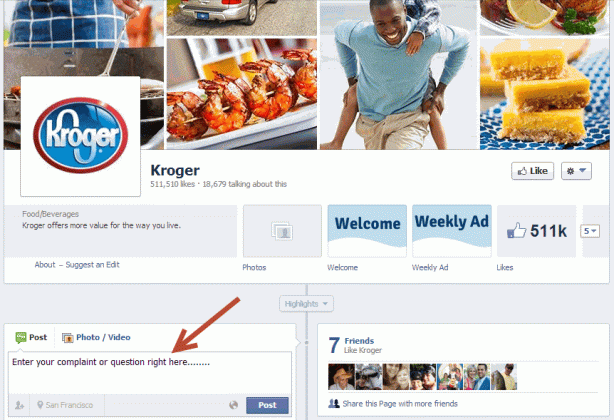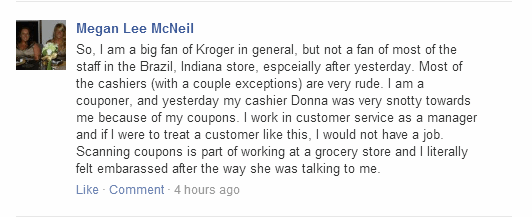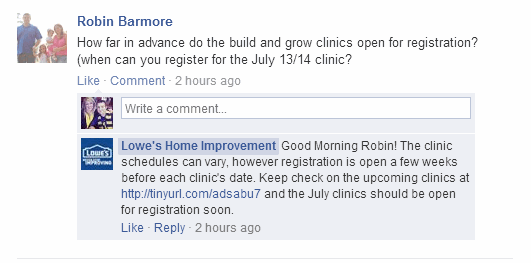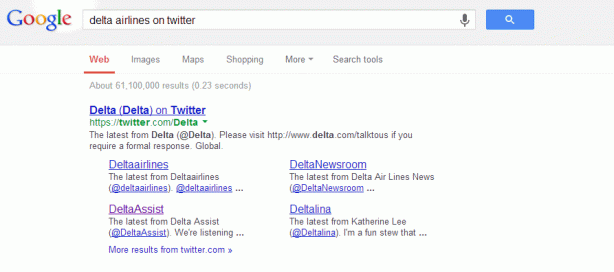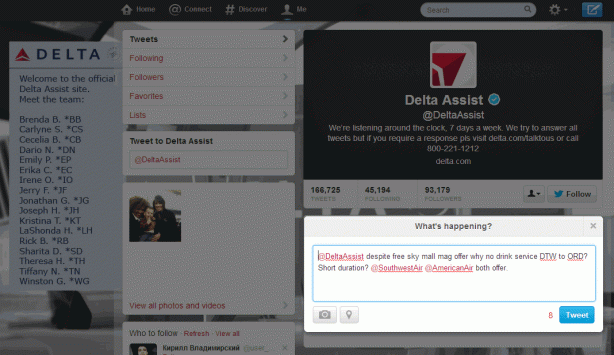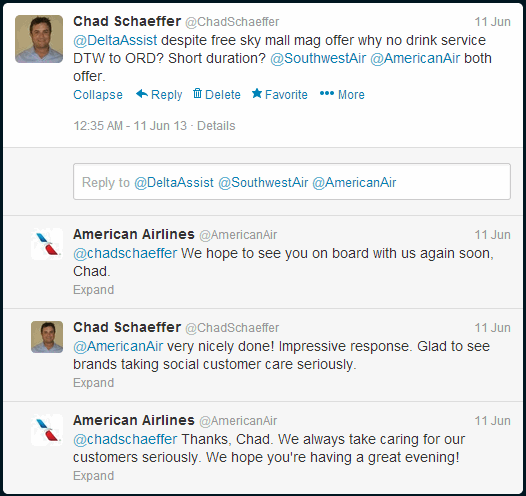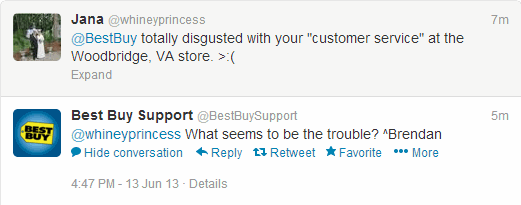 What’s fun and exciting this week? My last post on “How Kroger Ruined, Then Saved My Daughter’s Birthday” was the third most popular post of all time here on No Fluff Social Media. Thanks to everyone who took the time to read it.
What’s fun and exciting this week? My last post on “How Kroger Ruined, Then Saved My Daughter’s Birthday” was the third most popular post of all time here on No Fluff Social Media. Thanks to everyone who took the time to read it.
I often write about how big companies can improve their customer care in social media and I got to thinking perhaps some of you would be interested to know how to complain or ask a question of those brands on Facebook or Twitter.
For example, what if you get really bad service at Kroger or your frustrated with your AT&T cell phone bill always being wrong. Today, you may dial the 1-800 customer service number and may not find a good experience.
It’s possible you have to fumble through one of those dreaded IVR’s, you might wait on hold for a while or be limited to only calling from 9-5pm EST Monday through Friday.
Maybe you’ve tried email and had to fill out one of those pain in the butt contact us forms then had to wait 2-3 days for a simple response.
The emergence of Facebook and Twitter has given consumers like you and I a new convenient channel to interact with the companies we do business with like grocery stores, airlines and restaurants.
Interested? Below I’ve provided directions on how to interact with brands and a few examples so you can see what other consumers post.
The first example is Kroger on Facebook.
1. First, navigate to the Kroger Facebook page.
2. Locate the comment box on the top left side just under their cover photo.
3. Write your question, complaint or praise and click post. Simple as that. (keep it professional, swearing and being disrespectful may get your comment deleted or ignored)
Below is an example of a typical complaint a customer may have on a brand page like Kroger.
Here is an example from the AT&T Facebook page. Sometimes other customers will comment on your post.
Ideally, a brand will respond to your post very quickly like in this Lowe’s example below. Reminder, you can post questions and even give a positive shout out, Facebook comments aren’t just for complaining. Within the hour, Lowe’s responded with helpful follow-up information.
Let’s move from Facebook to Twitter.
A few days ago I posted a comment on the Delta Airlines Twitter account. I flew from Detroit to Chicago last week and they announced that due to the short nature of the flight, there was no time for drink service.
That seemed strange since my Southwest and American Airlines flights from Detroit to Chicago in the past month both served drinks. Obviously not a huge deal but I thought I would send Delta a tweet. I think you’ll find it interesting what happened from there.
First I wanted to find the Delta Airlines Twitter handle so I did a Google search. (Some companies have created a specific customer service Twitter handle like @DeltaAssist)
Second, I clicked the blue post button in the top right corner of the Delta Twitter Bio. Next I typed my comment in the comment box. Last I just hit Tweet. (Notice on the left Delta has posted the first names and Twitter initials of their Twitter customer service team)
First, Delta did not take the time to respond to my tweet. But guess who did? Since I mentioned American Airlines in my tweet they responded almost immediately which led to a back and forth engagement. Pretty cool!
Here is an example from Best Buy, it appears they are monitoring closely since they responded 2 minutes after the post with an offer to help.
This guy is not happy with Volkswagen!
A few keys to remember
1. Not all brands are good at monitoring and responding to questions and complaints on Facebook and Twitter. Your comment might be ignored.
2. Sometimes brands won’t answer your complaint or question in social media but will just respond with “call or email us” which can be really frustrating.
3. The above example screen shots were done from my laptop, however, it works the exact same way from the Facebook and Twitter mobile apps which is why it’s so convenient!
4. If you post a complaint later at night or on the weekends, expect a potential delay in response. Some brands are monitoring just during normal business hours, the good news, more and more companies are expanding their coverage.
Social Customer Care has given us as consumers a more powerful voice to fight back against bad customer service. Brands understand the viral nature of social media and are scared that just one bad experience can explode into a gigantic public relations nightmare.
Not to mention companies understand that what other consumers post on Facebook, Twitter and review sites help us determine whether we are going to buy a product or not.
In the past you’ve heard the word of mouth saying, “If a customer has a bad experience, they may tell 10 friends.” Well in the world of social media, “If a customer has a bad experience they may tell 10,000 friends!”
If you thought this post was helpful and your family or friends may be interested in how to post a comment on a brand’s Facebook or Twitter account please share this post, thanks so much again for reading my blog.

